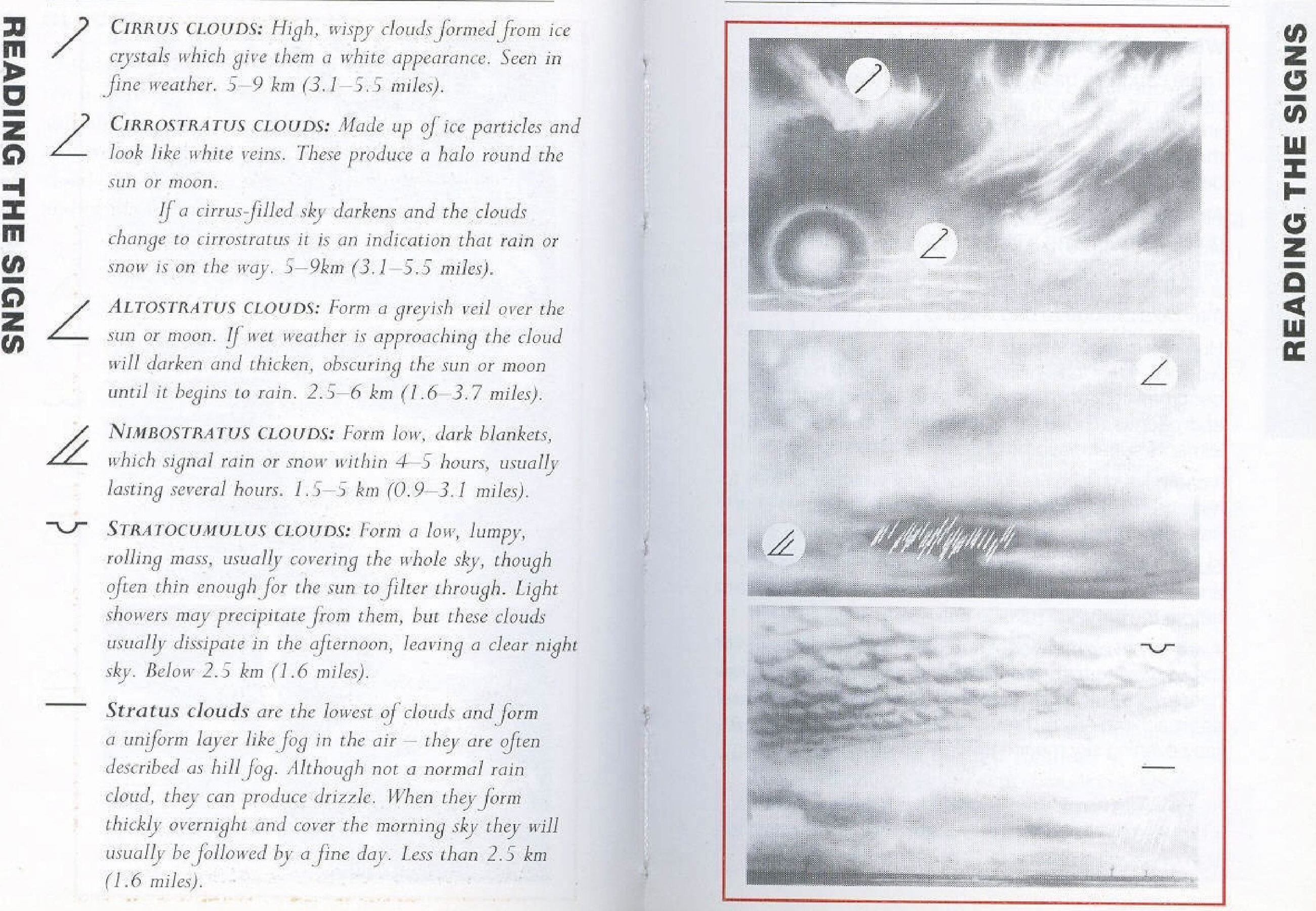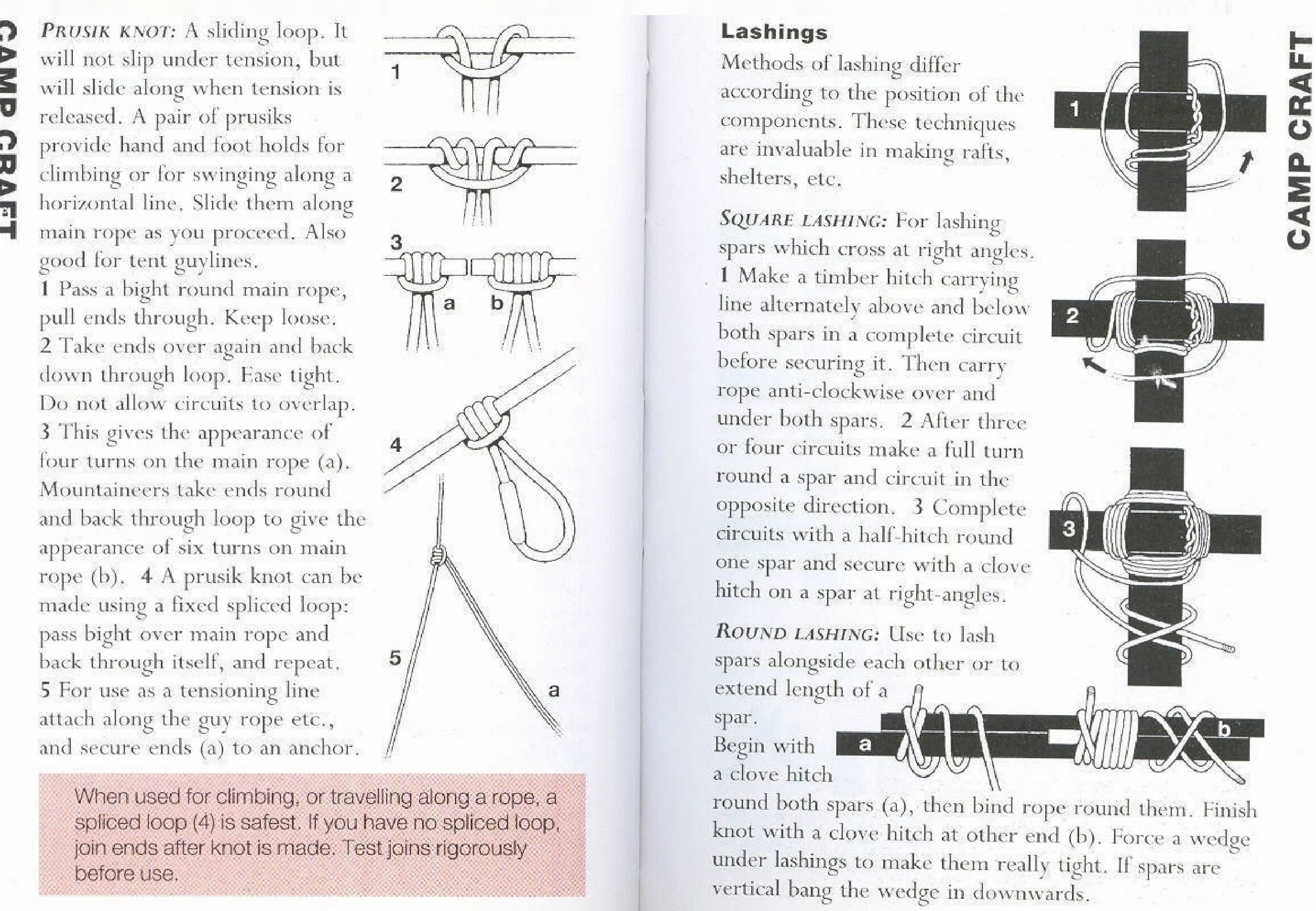Upload Your Infographic
 InfoHow.org
InfoHow.org
Categories
- Advice
- Animals
- Architecture
- Arts
- Banking
- Bitcoin & Blockchain
- Business, Finance & Employment
- Companies
- Countries, Maps & Geography
- Education
- Electronics & Technology
- Entertainment
- Fashion, Clothing & Grooming
- Food & Drink
- Holidays
- How To
- Internet & Communication
- Law & Crime
- Popular Culture & Social Media
- Science
- Social Science
- Society, Culture & Relationships
- Sports & Health
- Statistics
- Survival DIY
- War, Weapons & Military
About Author: InfoHowN
Posts by InfoHowN
SAS 135 – Rescue & Signalling
Information Signals: If you abandon camp leave clear direction markers to indicate your route. Continue to make them, not only for people to follow but to establish your own route […]
SAS 133 – Rescue & Signalling
Rag Signals: Tie a flag or a piece of bright – coloured clothing to a pole. Move it left for dashes and right for dots. Exaggerate with a figure of […]
SAS 132 – Rescue & Signalling
Heliograph: Use the sun and a reflector to flash light signals. Any shiny object will do – polished tin, glass, a piece of foil – but a hand mirror is […]
SAS 131 – Rescue & Signalling
By day smoke is good locator. Have a supply of smoke-producing material ready to put on your fires. Smoke not only helps rescue aircraft find you, it also shows surface […]
SAS 130 – Rescue & Signalling
Siting the signals: Take account of the terrain. Choose high points for light signals. Erect an unusual silhouette or a ridge to attract attention. Planes fly over hilly territory from […]
SAS 128 – Sea Survival & Fishing
The survival at sea is vulnerable to shark attack. Ocean sharks are not usually ferocious when food is plentiful. Most are cowards and can be scared off by the jab […]
SAS 127 – Sea Survival, Water Rationing & Fishing
Conserve emergency food supplies until needed. Try to live off sea life. There are dangerous fish, but in the open sea, fish are generally safe to eat. Near the shore […]
SAS 125 – Sea Survival & Signalling
How to Signal at Sea ? Use flares, dye markers and movement of any kind to attract attention at sea. If you have no signalling equipment, wave clothing or tarpauliins […]
SAS 124 – Sea Survival
Survival Afloat: Rafts, boats and dinghies are built to carry a limited number. These numbers should not be exceeded. Place infants and the infirm aboard, and as many able-boclied as […]
SAS 123 – Sea Survival
Swim slowly and steadily. If abandoning a sinking boat or aircraft get upwind and stay clear of it. Keep away from any fuel slick. If forced to swim through flames, […]
SAS 122 – Sea Survival & Abandoning Ships
Survival at Sea: Four-Fifths of the Earth’s surface is open water – the most difficult environment in which to survive. Water and wind rapidly chill the body. Alone in cold […]
SAS 121 – Moving on Water
Crossing with Ropes: You need a loop of rope three times as long as the width of the stream and at least three people in the party- the fittest person […]
SAS 120 – Moving on Waterways
Moving on the waterways needs to be done very carefully. A large group will need several rafts. The first should carry no equipment or provisions, just the fittest group members […]
SAS 118 – Moving
Negotiating territory at night can be dangerous, but may be necessary. Because it is difficult to see clearly you are easily disorientated. It is always darker among trees, so keep […]
SAS 116 – Moving
To make a sledge that is ideal for snow and ice, use doors and cowlings from a crashed vehicle or plane in construction. Tie lines to front runners with a […]
SAS 115 – Reading Weather & Deciding to Move
To be caught in bad weather could prove fatal. Before setting out, take note of the weather. Observe wind and pressure changes. Keep a record of the weather, the conditions […]
SAS 114 – Reading Weather with Clouds
There are different types of clouds that needs to be read to read the signs. They are Cirrus Clouds, Cirrostratus clouds, Altostratus clouds, Nimbostratus clouds, Stratocumulus clouds, Stratus clouds.
SAS 113 – Reading Weather with Clouds
Clouds are the most reliable of weather signs. There are ten main types of cloud formation. Approximate altitudes are given for each type. THe same shapes occur at lower altitutudes […]
SAS 112 – Direction Finding & Weather
Weather is much more localised than climate and there can be marked variations between one small area and the next. A regular pattern of day-night change in wind direction suggests […]
SAS 110 – Direction Finding
Plants can give an indication of north and south. They tend to grow towards the sun, so flowers and most abundant growth will be to the south in the northern […]
SAS 109 – Direction Finding
Direction by Watch: a traditional analogue watch with two hands can tell direction, provided it is set to true local time. The nearer the Equator you are, the less accurate […]
SAS 108 – Map Reading & Direction Finding
Direction Finding: The sun rises the eas and sets in the west, roughly speaking. In the northern hemisphere, at noon, the sun will be due south; in the southern hemisphere […]
SAS 105 – Knots
There techniques for lashing differ consistent with the position of the segments. THese strategies are significant in making flatboats, safe houses and so on.
SAS 102 – Knots
Tie the same number stepping stools as manharness hitches in a rope as you need hand and toeholds. An arrangement of overhand hitches tied at interims in a smooth rope […]

![SAS 135 – Rescue & Signalling Information Signals: If you abandon camp leave clear direction markers to indicate your route. Continue to make them, not only for people to follow but to establish your own route […]](https://www.infohow.org/wp-content/uploads/2012/11/SAS-135-Rescue-Signalling.jpg)
![SAS 133 – Rescue & Signalling Rag Signals: Tie a flag or a piece of bright – coloured clothing to a pole. Move it left for dashes and right for dots. Exaggerate with a figure of […]](https://www.infohow.org/wp-content/uploads/2012/11/SAS-133-Rescue-Signalling.jpg)
![SAS 132 – Rescue & Signalling Heliograph: Use the sun and a reflector to flash light signals. Any shiny object will do – polished tin, glass, a piece of foil – but a hand mirror is […]](https://www.infohow.org/wp-content/uploads/2012/11/SAS-132-Rescue-Signalling.jpg)
![SAS 131 – Rescue & Signalling By day smoke is good locator. Have a supply of smoke-producing material ready to put on your fires. Smoke not only helps rescue aircraft find you, it also shows surface […]](https://www.infohow.org/wp-content/uploads/2012/11/SAS-131-Rescue-Signalling.jpg)
![SAS 130 – Rescue & Signalling Siting the signals: Take account of the terrain. Choose high points for light signals. Erect an unusual silhouette or a ridge to attract attention. Planes fly over hilly territory from […]](https://www.infohow.org/wp-content/uploads/2012/11/SAS-130-Rescue-Signalling.jpg)
![SAS 128 – Sea Survival & Fishing The survival at sea is vulnerable to shark attack. Ocean sharks are not usually ferocious when food is plentiful. Most are cowards and can be scared off by the jab […]](https://www.infohow.org/wp-content/uploads/2012/11/SAS-128-Sea-Survival-Fishing.jpg)
![SAS 127 – Sea Survival, Water Rationing & Fishing Conserve emergency food supplies until needed. Try to live off sea life. There are dangerous fish, but in the open sea, fish are generally safe to eat. Near the shore […]](https://www.infohow.org/wp-content/uploads/2012/11/SAS-127-Sea-Survival-Water-Rationing-Fishing.jpg)
![SAS 125 – Sea Survival & Signalling How to Signal at Sea ? Use flares, dye markers and movement of any kind to attract attention at sea. If you have no signalling equipment, wave clothing or tarpauliins […]](https://www.infohow.org/wp-content/uploads/2012/11/SAS-125-Sea-Survival-Signalling.jpg)
![SAS 124 – Sea Survival Survival Afloat: Rafts, boats and dinghies are built to carry a limited number. These numbers should not be exceeded. Place infants and the infirm aboard, and as many able-boclied as […]](https://www.infohow.org/wp-content/uploads/2012/11/SAS-124-Sea-Survival.jpg)
![SAS 123 – Sea Survival Swim slowly and steadily. If abandoning a sinking boat or aircraft get upwind and stay clear of it. Keep away from any fuel slick. If forced to swim through flames, […]](https://www.infohow.org/wp-content/uploads/2012/11/SAS-123-Sea-Survival.jpg)
![SAS 122 – Sea Survival & Abandoning Ships Survival at Sea: Four-Fifths of the Earth’s surface is open water – the most difficult environment in which to survive. Water and wind rapidly chill the body. Alone in cold […]](https://www.infohow.org/wp-content/uploads/2012/11/SAS-122-Sea-Survival-Abandoning-Ships.jpg)
![SAS 121 – Moving on Water Crossing with Ropes: You need a loop of rope three times as long as the width of the stream and at least three people in the party- the fittest person […]](https://www.infohow.org/wp-content/uploads/2012/11/SAS-121-Moving-on-Water.jpg)
![SAS 120 – Moving on Waterways Moving on the waterways needs to be done very carefully. A large group will need several rafts. The first should carry no equipment or provisions, just the fittest group members […]](https://www.infohow.org/wp-content/uploads/2012/11/SAS-120-Moving-on-Waterways.jpg)
![SAS 118 – Moving Negotiating territory at night can be dangerous, but may be necessary. Because it is difficult to see clearly you are easily disorientated. It is always darker among trees, so keep […]](https://www.infohow.org/wp-content/uploads/2012/11/SAS-118-Moving.jpg)
![SAS 116 – Moving To make a sledge that is ideal for snow and ice, use doors and cowlings from a crashed vehicle or plane in construction. Tie lines to front runners with a […]](https://www.infohow.org/wp-content/uploads/2012/11/SAS-116-Moving.jpg)
![SAS 115 – Reading Weather & Deciding to Move To be caught in bad weather could prove fatal. Before setting out, take note of the weather. Observe wind and pressure changes. Keep a record of the weather, the conditions […]](https://www.infohow.org/wp-content/uploads/2012/11/SAS-115-Reading-Weather-Deciding-to-Move.jpg)

![SAS 113 – Reading Weather with Clouds Clouds are the most reliable of weather signs. There are ten main types of cloud formation. Approximate altitudes are given for each type. THe same shapes occur at lower altitutudes […]](https://www.infohow.org/wp-content/uploads/2012/11/SAS-113-Reading-Weather-with-Clouds.jpg)
![SAS 112 – Direction Finding & Weather Weather is much more localised than climate and there can be marked variations between one small area and the next. A regular pattern of day-night change in wind direction suggests […]](https://www.infohow.org/wp-content/uploads/2012/11/SAS-112-Direction-Finding-Weather.jpg)
![SAS 110 – Direction Finding Plants can give an indication of north and south. They tend to grow towards the sun, so flowers and most abundant growth will be to the south in the northern […]](https://www.infohow.org/wp-content/uploads/2012/11/SAS-110-Direction-Finding.jpg)
![SAS 109 – Direction Finding Direction by Watch: a traditional analogue watch with two hands can tell direction, provided it is set to true local time. The nearer the Equator you are, the less accurate […]](https://www.infohow.org/wp-content/uploads/2012/11/SAS-109-Direction-Finding.jpg)
![SAS 108 – Map Reading & Direction Finding Direction Finding: The sun rises the eas and sets in the west, roughly speaking. In the northern hemisphere, at noon, the sun will be due south; in the southern hemisphere […]](https://www.infohow.org/wp-content/uploads/2012/11/SAS-108-Map-Reading-Direction-Finding.jpg)

![SAS 102 – Knots Tie the same number stepping stools as manharness hitches in a rope as you need hand and toeholds. An arrangement of overhand hitches tied at interims in a smooth rope […]](https://www.infohow.org/wp-content/uploads/2012/11/SAS-102-Knots.jpg)
 Upload your infographic here and contribute to our community.
Upload your infographic here and contribute to our community.